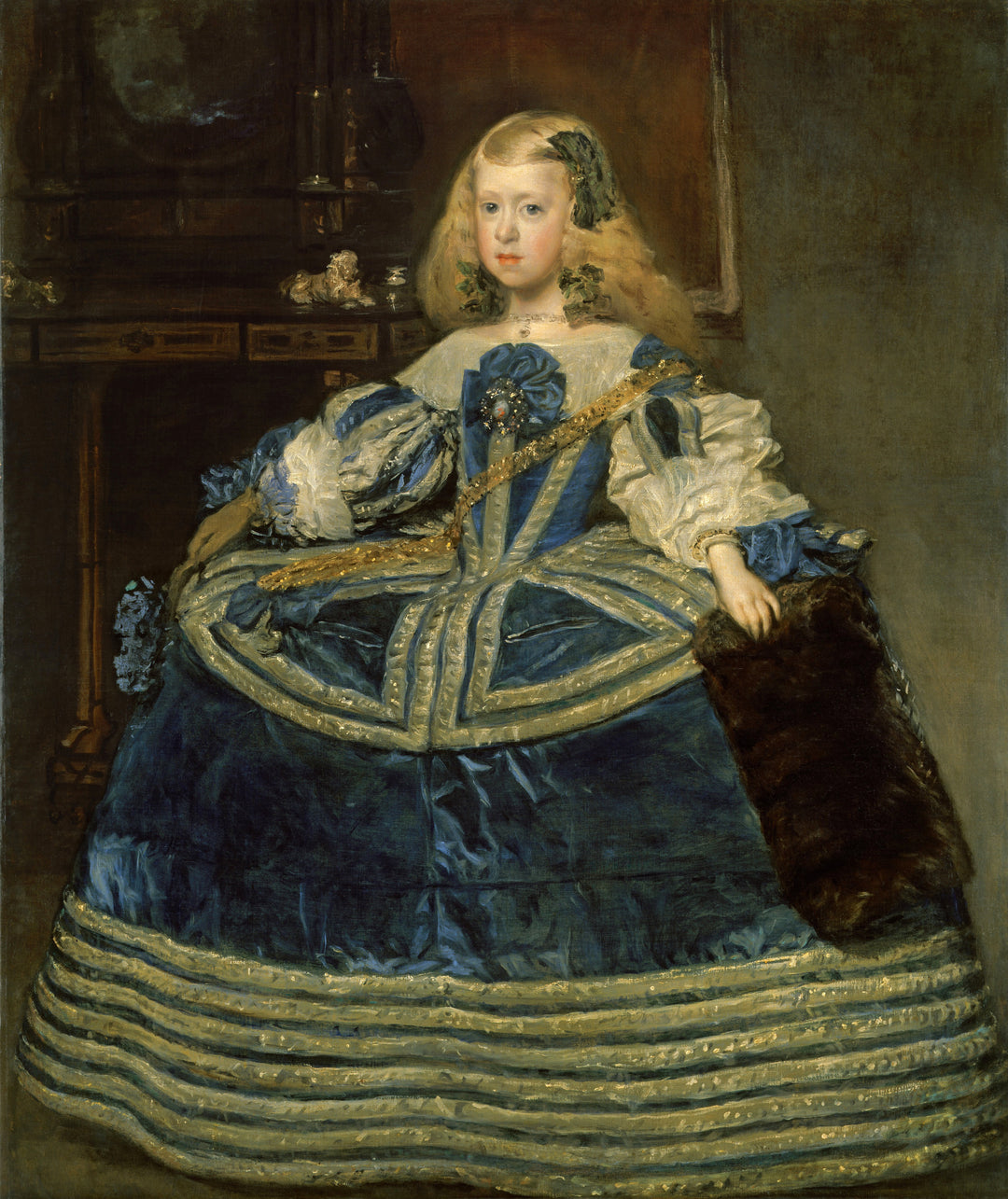
Portrait of the Infanta Margarita, Diego Velázquez
| Author: | Velázquez |
|---|---|
| Title: | Portrait of the Infanta Margarita |
| Original location: | Kunsthistorisches Museum, Vienna, Austria |
| Year: | 1659 |
The Infanta Margarita in Blue, painted by Diego Velázquez in 1659, portrays Margarita Teresa of Austria, daughter of King Philip IV and Queen Mariana of Austria, who would later be betrothed to Emperor Leopold I of the Holy Roman Empire. Commissioned as part of the marriage arrangements, the portrait was sent to Vienna to present the Infanta to the imperial court and to consolidate dynastic alliances between the Spanish and Austrian branches of the Habsburgs. At only eight years old at the time of the portrait, Margarita was already recognized for her illustrious lineage and her central role in the dynastic politics of her era.
In the painting, Velázquez depicts the Infanta in a richly adorned blue gown, emphasizing both her royal status and her youth and innocence. The composition employs a dark background that enhances the luminosity of the dress and the serenity of Margarita’s face, demonstrating the artist’s exceptional mastery of color and light characteristic of the Baroque. This approach departs from the idealized conventions of the Renaissance, favoring instead a more realistic and emotionally resonant portrayal of the subject.
Within this extraordinary composition by the Sevillian master, one can discern both the academic tradition and nascent elements that would later resonate with Impressionism. From an academic perspective, the painting adheres to Baroque courtly conventions: the careful construction of space, the dignification of the sitter through her regal attire, the precise rendering of facial details and eyes with nearly imperceptible brushstrokes, and the symmetrical arrangement all conform to the principles of decorum and hierarchy typical of official portraiture. Yet, in Velázquez’s treatment of light and color, the work transcends academic rigidity and anticipates concerns later associated with Impressionism. The loose brushwork in the details of the gown, the explicit visibility of texture in the paint, and the luminous highlights that vibrate across the surface reveal an attention to optical effects rather than mere material description, generating an atmosphere of perceptual immediacy. In this way, the painting oscillates between the solemnity of academic portraiture and a pictorial experimentation that, though incipient, foreshadows the visual modernity that would centuries later define Impressionism.
Historically, the portrait reflects both the decline of the Spanish Empire and the centrality of dynastic marriages in Habsburg diplomacy, with Margarita herself serving as a symbol of dynastic continuity. Velázquez’s approach would go on to influence later artists such as Francisco de Goya, who also portrayed royal figures with an emphasis on their humanity and psychological depth.
The Infanta Margarita in Blue thus stands out not only for its technical brilliance but also for its political and familial significance. The painting underscores the function of art in the service of diplomacy, transforming portraiture into a medium through which both the subject and the person are immortalized.